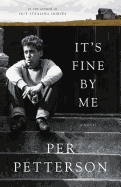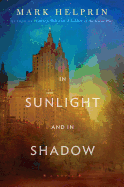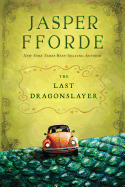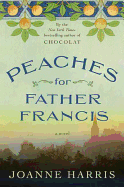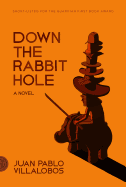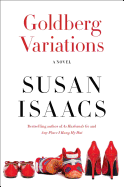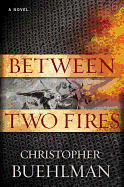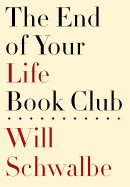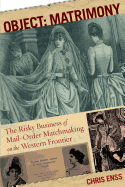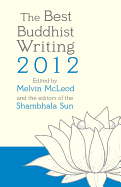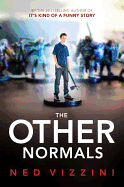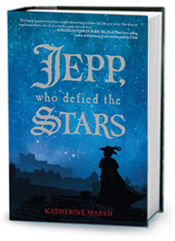Tuesday, October 9, 2012
There's been a lot of discussion recently about the act of reading--how many books are being purchased and read, and how the transmission of text affects the experience of reading. And there seems to be more information about books and reading, with so many websites and blogs devoted to the discussion. We welcome to that the current abundance of books about books.
Last year, we enjoyed Nina Sankovitch's memoir, Tolstoy and the Purple Chair: My Year of Magical Reading (now out in paper). Three years after her older sister died, Sankovitch, still deeply grieving, decided to read one book a day for a year. She and her sister loved books, and the author thought of using books as a way not to escape from life, but to escape into life. Her eclectic reading list and unalloyed delight in reading are catnip for booklovers.
In a similar vein, Will Schwalbe has written The End of Your Life Book Club (our review is below) about the joy and tenderness he and his mother shared while sharing books, as she was treated for fatal pancreatic cancer. Later this month, Joe Queenan's memoir One for the Books will be published (October 25). The famously sarcastic writer loves reading books, buying books at bookstores, checking out books from libraries. Along with his trademark sharp prose, he includes a bushel of his favorite titles.
November 13 brings My Ideal Bookshelf, edited by Thessaly La Force, illustrated by Jane Mount. LaForce asked authors and other celebrities what titles they would choose if they had to fill a short shelf with books that represented them. Michael Chabon, Tony Hawk, Alice Waters, James Franco--it's a potpourri of readers, titles, essays and delightful colorful drawings.
This is just the beginning--there are, happily, more books about books to come. --Marilyn Dahl, book review editor, Shelf Awareness
It's Fine by Me
by Per Petterson, transl. by Don Bartlett
First published in Norway in 1992, two years after the death of Per Petterson's (Out Stealing Horses) parents, brother and nephew in a fire, It's Fine by Me mines both the adolescent struggle to form an identity and the emotional defense mechanisms built by the grieving to protect them from the pain of loss.
On 13-year-old Audun Sletten's first day at Veitvet School, the headmaster asks him to remove his sunglasses. Audun simply and firmly demurs: "I have scars." Though he is lying and has no physical scars, he has also told a deeper truth. Audun carries his scars inside, and he has no intention of revealing the stories behind them. Even his best friend Arvid Jansen--the main character of Petterson's previous novels In the Wake and I Curse the River of Time--finds Audun an enigma, a boy who uses the refrain "It's fine by me" to disguise his perturbation at the misfortunes of his life and the unfeeling actions of others, even from himself.
Readers who love deep examinations of character will find themselves caught in Audun's voice like a ray of light in a prism, their emotions filtering through in a spectrum of compassion, commiseration and admiration. Petterson's prose is brisk and unornamented, perfect for evoking the austere beauty of the Norwegian landscape and yet packed with emotions both powerful and subtle. --Jaclyn Fulwood, blogger, Infinite Reads
Discover: Acclaimed Norwegian writer Per Petterson’s early, powerful novel about adolescent grief and loss, and the struggle to mature and create a life worth living.
In Sunlight and in Shadow
by Mark Helprin
Lush, poetic and elegant, Mark Helprin's writing has garnered accolades and a legion of loyal readers. His work has often featured elements of magic realism and satire that complement his extravagantly lovely prose. While In Sunlight and in Shadow proves a departure from those elements--its action, setting and characters are quite straightforward--it does return to themes that Helprin has explored before: post-World War II America (specifically, a gorgeously detailed New York City), class division in society and, perhaps most importantly, the nature of love.
In Sunlight and in Shadow begins with a chance encounter. It's May 1946 and Harry Copeland spies a beautiful young woman dressed in white: Catherine Thomas Hale, the only child of one of New York's wealthiest families. They fall in love, then Catherine reveals that she is engaged to the mean and vengeful Victor Marrow. But war veteran Harry has been renewed by love and will not be deterred. Throw in a mob boss who is squeezing Harry for money, and a dangerous all-or-nothing plan is formed.
At 700 pages, this is not a novel to rush through--it unfolds like a particularly intricate dreamscape with characters and plot revealed in small, jewel-like details. Helprin's gift for description cannot be overstated and his ability to convey the effects of war on both the micro and macro levels is extraordinary. The freighted love that Harry and Catherine share and the specter of violence form a delicate counterpoint, the sunshine and shadow of the title. Richly atmospheric and beautifully written, In Sunlight and in Shadow is a paean to love that will linger long in the imagination. --Debra Ginsberg, author
Discover: A rich, languorous novel about the effects of war and the power and pull of love.
Peaches for Father Francis
by Joanne Harris
It has been eight years since Vianne Rocher left Lansquenet, where she charmed some villagers and made enemies of others in Joanne Harris's Chocolat. Now, after facing down her own demons in Paris, Vianne receives a letter: her old friend Armande Voizin urges her to return to Lansquenet because someone there needs her help. Arriving with her daughters, Vianne is pleased to be back among friends; even her old enemy, Father Francis Reynaud, has softened with time. But a new settlement of Moroccans by the river has caused tension among the townspeople, and a mysterious veiled woman may be behind it all.
Harris expertly draws readers back into Vianne's world, with mouthwatering descriptions of the chocolates Vianne makes and the exotic, spicy foods of her new neighbors. She contrasts the quiet Catholic village with its new Muslim neighborhood, touching on issues of religious freedom--including the wearing of the face veils known as niqab. Vianne finds herself drawn into her neighbors' affairs, unsure whether her presence will help or hurt. And although Father Reynaud is inclined to mistrust the newcomers, he must confront his long-held prejudices if he wants to remain in the community he loves.
Fans of Harris's work will delight in her lush descriptions, vividly drawn characters and the bits of magic visible around every corner. Tension melds with joy into a finely crafted bittersweet ending, as rich and unforgettable as one of Vianne's dark chocolate truffles. --Katie Noah Gibson, blogger at Cakes, Tea and Dreams
Discover: Return to the world of Chocolat, as Harris probes the tensions between French villagers and their new Moroccan neighbors.
Down the Rabbit Hole
by Juan Pablo Villalobos, transl. by Rosalind Harvey
Juan Pablo Villalobos's short debut novel, Down the Rabbit Hole, is a galloping, violent fairy tale. Tochtli, the sheltered young son of a drug lord, shaved bald and too macho to cry, has a lavish collection of hats from all over the world and enjoys reading the dictionary and using new words like "sordid," "pathetic" and "devastating." He lives in a palace in the middle of nowhere with a gym, a sauna and a swimming pool. Because of his father's fortunes in pesos, dollars and euros, Tochtli has met only 14 people in his life, including armed guards.
His disturbing account of daily life amid limitless wealth is peppered with casual executions, sheltered by the love of a ruthless criminal father who lectures his son on how many bullets are needed to turn people into corpses and who assures him that "gangs are about not hiding things and seeing the truth." Then one day Tochtli discovers that one of the locked "empty rooms they don't use" is really the gun and rifle room. His father is lying to him.
Suddenly we're on a flight to Paris, with the characters disguised (even from the reader) under fake names modeled on the Honduran soccer team, en route to Africa to get the boy the pet he wants, a Liberian pygmy hippopotamus. Wandering the drug lord's compound in his pajamas (he's a samurai), Tochtli makes the best of his life, like a captive Little Prince, incontestably loved by a brutal, sociopathic father who tries to grant his son's every wish. --Nick DiMartino, Nick's Picks, University Book Store, Seattle
Discover: A darkly humorous child's-eye view of life in the palace of a ruthless, fabulously wealthy drug lord.
Goldberg Variations
by Susan Isaacs
Susan Isaacs (Compromising Positions) has created a perfect setup in Goldberg Variations. Gloria Goldberg Goldberg Garrison (born Goldberg, married to Joe Goldberg, changed her name to Garrison) is looking for someone to take over Glory, Inc., her beauty makeover business. At 79, Gloria is friendless, cranky, imperious, hyper-critical and unrepentant.
She summons her three 20-something grandchildren, whom she barely knows, so she can vet them even more closely than the private eye she hired. They arrive in Santa Fe, lured from New York by curiosity and business-class airline tickets. Siblings Daisy and Matthew are children of Glory's son Bradley; Raquel is the only child of Trevor, the favored son, who died when Raquel was four.
On the evening of their arrival, Glory tells the cousins about the company she started from nothing and built into an $11-million-a-year success story. They listen attentively when she invites them to take over the business. Then, surprisingly, they turn her down; they are all reasonably satisfied with their chosen work. Glory is not amused; she decides that she will send them all home the next morning.
Of course, there would be no story if that happened. In typical Isaacs style, the story expands and characters reveal themselves. Chapters are narrated alternately by Gloria, Matthew, Daisy and Raquel, interspersed with conversations between and among all of them.
Gloria's narcissism knows no bounds. She has gotten away with it for so long because there has been no one to challenge her. But after spending time together, Isaacs's characters begin to question long-held assumptions. --Valerie Ryan, Cannon Beach Book Company, Ore.
Discover: Three grandchildren are summoned to their grandmother's estate so she can look them over and offer one of them her fortune. Things do not go as planned.
Science Fiction & Fantasy
Between Two Fires
by Christopher Buehlman
Fans of Those Across the River hoping for another chilling horror story will be caught off guard--and then likely delighted--by Christopher Buehlman's followup, Between Two Fires.
France, 1348: A former knight, his land and family taken from him, wanders with a pack of brigands across a countryside decimated by plague, the dead left to rot where they fall. When they come across a nearly adolescent girl still alive, Thomas feels compelled to save her from his colleagues, but his mood promptly sours when she insists on accompanying him. He's even less thrilled once she tells him the dream she's had: "I have to go to Avignon. I'm not sure why. I have something I have to do. And you have to make sure I get there safely."
If you know your medieval history, you'll recognize the significance of their destination: Avignon was the home to a string of 14th-century popes, and the real-life pontiff Clement VI will eventually play a key role in the drama. Long before then, however, the story becomes increasingly dark, downright phantasmagoric. And yet, while demonic forces throw one horrific obstacle after another at the unlikely partners--accompanied by an alcoholic priest facing a severe crisis of conscience--Buehlman stays focused on Thomas and his inner turmoil, and though the trials Thomas faces are severe, we never doubt he will rise to the occasion as the girl's holy mission becomes clearer.
By combining modern horror dynamics with a convincing medieval setting, Christopher Buehlman secures his status among today's leading dark fantasy authors. --Ron Hogan, founder of Beatrice.com
Discover: Beuhlman's second novel starts out as a medieval variation on True Grit, but shifts into a horror story with welcome echoes of early Stephen King.
Biography & Memoir
The End of Your Life Book Club
by Will Schwalbe
After reading The End of Your Life Book Club, you'll be grateful to Will Schwalbe for sharing for his exceptionally thoughtful book list, but even more so for the story of his extraordinarily good and brilliant mother and their tender relationship.
We know Mary Ann Schwalbe will die of pancreatic cancer, and we mourn her from the opening pages. When her son Will offers to accompany her to appointments and treatments, he starts an early waiting-room conversation with a familiar question: "What are you reading?" Thus, their book-club-for-two was born, as they agreed to share whatever books captivated either of them.
The story of the two years of Schwalbe's mother's illness, The End of Your Life Book Club is also an homage to her remarkable life: in theater, as director of admissions at Harvard and Radcliffe, as an organizer of refugee rescue efforts and as a wife and mother. We see her wit and acceptance, the strength she gives to others. Schwalbe's accounts of their book discussions lead to reflections on life, as well as insights into the works and the authors. (Early on, they literally passed Alan Bennett's An Uncommon Reader back and forth, sharing passages that expressed the passion for books they, too, felt.)
Ultimately, though, The End of Your Life Book Club is about Mary Ann: How is she feeling in this chapter? Will she have a good report? We love her early on, and not weeping is not an option. --Cheryl Krocker McKeon, bookseller
Discover: A writer's loving tribute to his mother through the books they read together in her last years.
History
Object: Matrimony: The Risky Business of Mail-Order Matchmaking on the Western Frontier
by Chris Enss
After the Civil War, it was difficult for young women in the eastern United States to find a spouse; so many young men had been killed in the war or had traveled west in search of gold. The gold hunters also wanted mates, but found a shortage of ladies out west. A prosperous business emerged from this mutual need: the mail-order bride. Like her previous book, Hearts West: True Stories of Mail-Order Brides on the Frontier, Chris Enss's Object: Matrimony delves into 19th-century personal ads, bringing to life more of the stories behind their stoic black-and-white photographs.
With humor and sensitivity, Enss introduces us to some of the women who traveled hundreds of miles by wagon, stagecoach or steamship in search of love--a quest based at times on only one photo and one letter. Sometimes a woman discovered her betrothed was already married, or that he was simply after her money; false information was also a frequent problem. In 1929, one bride, Eva Brandon, made the news when she poisoned her new husband during the wedding party; this murder case was one of the earliest where scientists examined evidence for poisoning, leading to today's forensic toxicology.
Still, most of these women accepted the unusual situation and began families with their new spouses. From these rustic beginnings, personal ads and online dating evolved. Although brief, each essay is sympathetic to the plight of women in the late 1800s and early 1900s as they searched for a good husband. --Lee E. Cart, freelance writer and book reviewer
Discover: Thoughtful tales of Western frontiersmen shopping for spouses in late 19th-century America.
Religion
The Best Buddhist Writing 2012
by Melvin McLeod
Every year, Melvin McLeod and the editors at Shambhala Sun cull the best magazine pieces and book excerpts for one of the most thought-provoking Buddhist anthologies around. The 2012 edition of The Best Buddhist Writing continues the streak with a diversity of voices and visions that offer a wonderful entry point to modern Buddhist wisdom.
The anthology effortlessly weaves different strands of Buddhist thought and practice--Tibetan, Zen, Theravada and Mahayana traditions--and varying degrees of awareness, from the novice practitioner to renowned spiritual masters like Thich Nhat Hanh and the Dalai Lama. Callie Bates writes with great emotional discernment of her cancer diagnosis in "The Purple Wig," describing how Buddhism provided a critical support network and helped ground her in the event. Barry Boyce gets right to the heart of Chogyan Trungpa Rinpoche's crazy wisdom and almost dangerous charisma in a short memoir of Shambala Sun's guiding spirit, "Ocean of Dharma." "Wide Awake" offers an energetic take on the Buddhist way from Noah Levine that adds a healthy dose of punk D.I.Y. ethos to the path of liberation.
The Best Buddhist Writing 2012 is admirable in the breadth of voices it offers and the cohesive way the pieces are pulled together. For long-time practitioners, sympathetic fellow travelers and those just beginning an inquiry into the Buddhist way, this anthology provides good writing and deep wisdom to engage, entertain and maybe even plant a first foothold on the path to enlightenment. --Donald Powell, freelance writer
Discover: A thought-provoking and spiritually fulfilling anthology of Buddhist wisdom and good writing.
Children's & Young Adult
The Last Dragonslayer: The Chronicles of Kazam, Book One
by Jasper Fforde
Jasper Fforde, a bestselling author for adults (The Eyre Affair), smoothly makes the transition to a younger audience with this humorous and heartwarming tale.
As we meet 15-year-old narrator Jennifer Strange, magic is slowly leaking out of the world. Once-great wizards now deliver pizzas on magic carpets, charm moles out of gardens and remove illegally parked cars. Jennifer is the acting manager for the wizards of Kazam Mystical Arts Management in the Kingdom of Hereford of the Ununited Kingdoms. "My job... was less about spells and enchantments, diplomacy and bureaucracy, than about babysitting," Jennifer admits. The dragon population is decreasing, and many believe that its diminishment is related to the dwindling magic. One dragon, Maltcassion, remains, and a wizard predicts that Maltcassion will "die by the sword of a Dragonslayer" within a week. Once the dragon dies, the Dragonlands become open territory--anyone can claim a piece of it. That's not all: it seems that Jennifer is the Last Dragonslayer.
The story proceeds at a breakneck pace, as royalty, corporate henchmen and everyday people vie for a piece of the Dragonlands. The author creates an Arthurian-style tale set in modern times, where the memory of once-strong magic still lingers and the possibility of its restoration is tantalizing to some, while the lure of wealth dazzles others. Greed and integrity, fate and free will battle it out, and Fforde keeps readers guessing to the final page. Readers will be eager to return to this magical world that shares much in common with our own. --Jennifer M. Brown, children’s editor, Shelf Awareness
Discover: An modern Arthurian-esque legend for young readers that pokes fun at corporate greed by the author of The Eyre Affair.
The Other Normals
by Ned Vizzini
Ned Vizzini (It's Kind of a Funny Story) brings on the laughs with an unlikely hero recruited from our world to save the World of the Other Normals.
Fifteen-year-old Perry Eckert is not excited by the "normal world." Perry, a role-playing game enthusiast, would much rather indulge in Creatures & Caverns all summer than attend Camp Washiska Lake, where his divorced parents hope he'll become "emotionally mature" around normal kids. Once he's at camp, though, a red-skinned, yellow-haired being named Mortin Enaw from the World of the Other Normals enlists Perry's help in a matter of universal importance: their princess is in the clutches of Ophisa, "a horrific mutant beast that combines insectoid and reptilian, with a hundred ten eyes and poison fangs, as tall as a tree." In order to save her, Perry's task is to kiss a real girl at camp, though he'd prefer to battle Ophisa in the Badlands than attempt his "decent romantic kiss" with Anna.
Vizzini's gaming-obsessed hero interrupts his adventure with hilarious returns to Camp Washiska Lake to complete his mission with Anna (though he'd really rather kiss Ada Ember, Mortin's elf-eared, full-lipped intern) and to face universal problems of adolescence by developing social skills. The brief, page-turning chapters in this imaginative novel will provide escapism even for gamers who rarely take a break for books. --Adam Silvera, reviewer and former bookseller
Discover: An unlikely hero recruited to save the world of his favorite role-playing game.
Jepp, Who Defied the Stars
by Katherine Marsh
Katherine Marsh's (The Night Tourist) captivating tale transports readers to 16th-century Astraveld, in the Netherlands, and places us in the shoes of 15-year-old Jepp, a dwarf with a loving innkeeper mother and an unknown father. Jepp searches the faces of the inn's guests to see if one of them might be his father. (He's already ruled out townsfolk men.) Then one night Don Diego arrives in town. He is a man of means, and when Jepp asks him if he knows his father, Don (as Jepp comes to call him) denies any such knowledge. But he does make Jepp an offer, to take him to the Infanta's court--"to see the world, and learn your place in it," as his mother tells him by way of encouragement.
Where Jepp was raised in Astraveld free to roam and pursue his own interests, at the royal court (the Infanta is a descendent of the Hapsburgs in Spain), he's forced to pop out of pies and play the buffoon. He comes to think of it as a "counterfeit paradise." But he also meets others like himself for the first time. Pim, one of the (normal-sized) court favorites, invites Jepp to be part of a dance lesson with Lia, a golden-haired dwarf with the voice of a songbird. Lia dances beautifully and Pim gently corrects her steps, and focuses all of his attentions on her. Jepp quickly surmises that Pim plans to make Jepp the clown with two left feet and asks Lia to give him private lessons so he can dance well, too. In the process, Jepp falls in love with Lia, and they form a friendship and confide in each other. Their friendship remains chaste, but teenaged Lia becomes pregnant. Jepp is crushed. A gnawing suspicion begins to grow in Jepp's conscience. And Jepp worries for Lia's well-being. Lia enlists Jepp's help to escape the court and sets in motion a sequence of events that forever changes him.
Marsh's exquisite writing achieves a formality of language that hints at antiquity without sacrificing accessibility. Her use of the cutaway from Jepp's present journey to past events that led him on this road, "imprisoned" in a coach, helps build suspense and allows us to watch as his life experiences and maturity chip away at his small-town innocence and innate sense of trust.
The author divides the book in three parts, and in the second part, the flashbacks cease--readers become immersed in Jepp's present. His coach's destination is the estate of Lord Tycho Brahe, an odd fellow with a prosthetic nose, who becomes an unlikely champion for Jepp, inviting him into his laboratory with the other scholars. "What I first took to be sorcery is actually science, man's own magic," Jepp observes.
Through Jepp, readers experience the dawning of the ideas at the root of the Renaissance, where science and art commingle. Tycho's daughter, Magdalene, creates the astrology charts for courts across Europe, and Tycho and his team of scientists track the coordinates of stars in the sky. Eventually, Jepp earns the task of cleaning the celestial globe, the map of the heavens where Tycho and the scientists record their discoveries of the stars. "I gently touch the stars," Jepp thinks, "wondering if they hold my fate or whether holding them, as I do now, allows me to create my own."
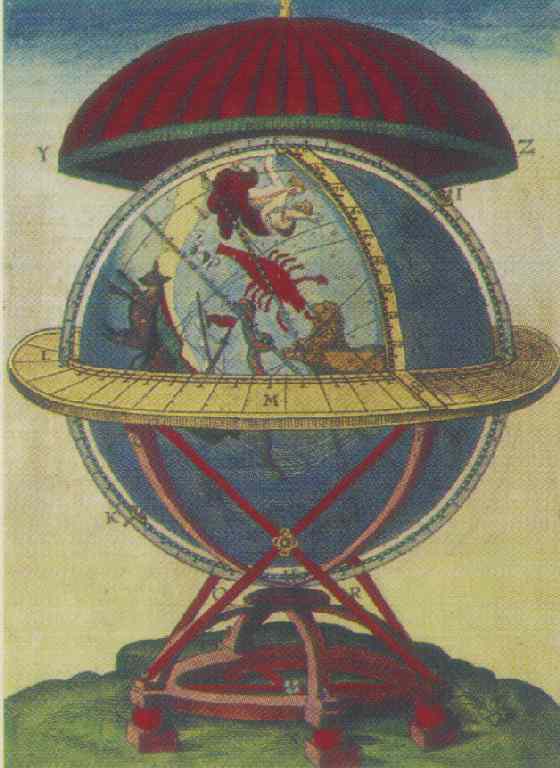 And this is the central question for Jepp. While Jepp believes human beings make our own fates, Magdalene believes the stars determine our course. As the story progresses, they come to respect one another, and open up to the possibilities of the other's point of view. Because her father married for love, not station, Magdalene cannot take her father's name nor inherit his lands. Like Jepp, she knows what it means to have no true place in society.
And this is the central question for Jepp. While Jepp believes human beings make our own fates, Magdalene believes the stars determine our course. As the story progresses, they come to respect one another, and open up to the possibilities of the other's point of view. Because her father married for love, not station, Magdalene cannot take her father's name nor inherit his lands. Like Jepp, she knows what it means to have no true place in society.
Marsh creates a world in which science and faith in humankind's possibilities rest side by side, and not always peacefully. She places Jepp at the heart of these shifts, and allows him to truly experience them; as he tells Magdalene, "Is not our capacity to choose, to chase, to dream of becoming other than we are, more powerful than the patterns of the stars?" Even as Jepp continues his search for his father and true heritage, readers will feel confident that whatever he discovers, he has seen the world and will find his place in it. His story may be set in 16th-century Europe, but his journey is timeless. --Jennifer M. Brown


